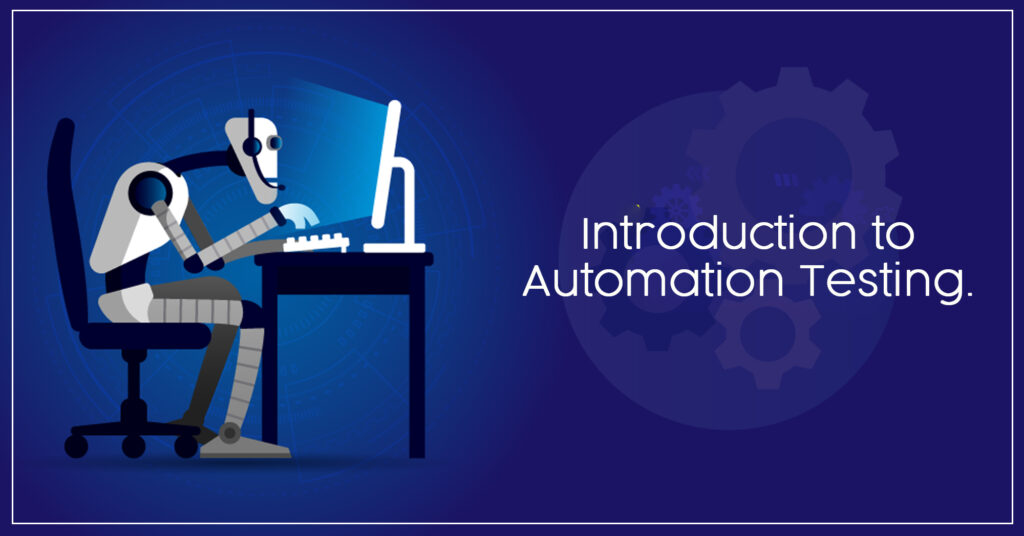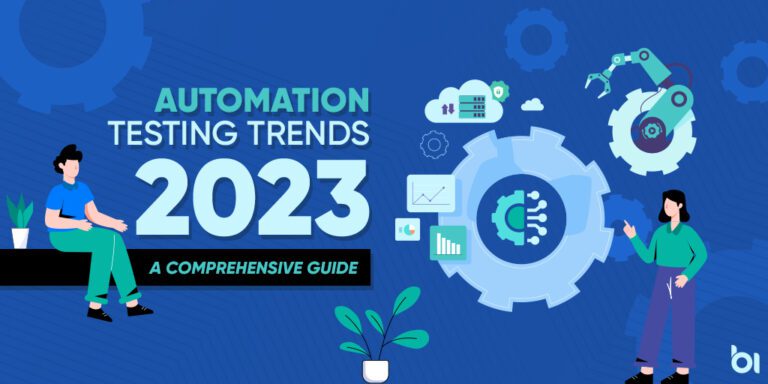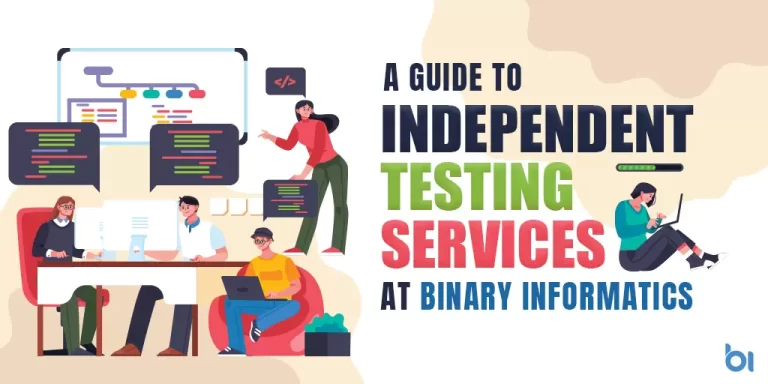Discover the latest automation testing trends set to transform software development in 2023. Explore AI integration, TDD, CI/CD, cloud automation & more.
Table of Contents
ToggleAn Introduction to Automation Testing

Automation testing has gained increasing prominence within the software development industry due to its ability to increase efficiency and accuracy during testing processes.
It refers to software testing which utilizes automated tools for conducting test cases without manual intervention; its main aim is to ensure software applications meet end-user expectations and meet their requirements
Automation Testing Overview
Automation testing is a practice that uses specialized tools and frameworks to automate repetitive manual test cases, with the ultimate aim of increasing speed, efficiency, and accuracy in their execution.
Functional Test Automation and Regression Test Automation are two common forms of automation testing employed during software development.
Functional Test Automation involves automating functional test cases such as GUI (graphical user interface), API (Application Programming Interface), database tests, security checks, usability evaluations, etc. Regression Test Automation involves running a set of test cases that aim at identifying any issues created by changes made in software development.
The Importance of Automation Testing in Software Development
Automation testing has become an indispensable element of software development, offering developers and businesses many benefits. Automated tests reduce time-to-market because they run faster than manual ones; secondly, automation enhances efficiency by eliminating human errors associated with manual tasks while improving accuracy through consistent execution.
Automation helps lower costs associated with manual labor by using fewer resources for automated tests and improving overall quality assurance by quickly detecting any errors/bugs early in development cycles before they become major problems for end-users.
An Overview of Automation Testing Trends
Automation testing is constantly transforming, with new trends emerging each year to enhance its effectiveness and efficiency. 2023 could see AI/ML integration with test automation, Test Driven Development (TDD), Continuous Integration/Deployment (CI/CD), Cloud-Based Test Automation, Mobile Test Automation, etc. becoming key trends within automation testing.
These trends aim to enhance automation testing further and equip developers with superior tools for testing applications. In the following sections, we will dive deeper into each trend’s benefits and drawbacks.
People Also Read: The Importance of Professional QA Testing Services for Businesses
Current State of Automation Testing
Automation testing has quickly become one of the cornerstones of software development. This practice utilizes various automated tools and techniques to shorten testing cycles while saving both time and resources.
Automation testing ensures that the software developed meets quality standards expected by clients, yet this essential aspect of development still presents some obstacles and hurdles.
Current Challenges in Automation Testing
Automation testing poses numerous obstacles, the chief among them being maintaining test scripts over time. As applications evolve and change, their test scripts require updating regularly in order to remain applicable – something which takes considerable manual effort and expertise, increasing costs while possibly impacting quality.
Automation testing poses another difficulty: making sure automated tests can reliably and accurately detect errors. Automated tests depend on specific parameters being set by developers or testers, which if misconfigured can lead to false positives or negatives that make testing unreliable.
Automation helps accelerate regression testing processes considerably; however, automated tests cannot adequately replicate certain scenarios that require human input like exploratory or usability testing cases. These require human intervention and cannot be duplicated with automated tests alone.
Advancements in Automation Tools and Techniques
To effectively address these challenges, automation tools and techniques used for software testing have undergone considerable advancement. One such innovation is Artificial Intelligence’s (AI) integration with Selenium to make them smarter at detecting defects faster than humans could.
Continuous Integration/Continuous Delivery pipelines have also reduced manual effort related to deployment tasks by automating builds, release cycle approval checks, and more – speeding up the development lifecycle and decreasing deployment efforts for developers.
Adoption and Implementation of Automation Testing
Even with its many advantages, many organizations remain wary about adopting full-scale automation due to concerns around initial investment costs or perceived difficulty transitioning from traditional manual methods into automated ones seamlessly.
It can be particularly challenging for organizations that wish to maintain existing processes while reaping the rewards of automation testing.
But adoption rates continue to rise due to automation’s ability to speed time-to-market and improve software quality. While simultaneously decreasing the manual effort needed during QA testing, increasingly businesses recognize its significance and look for ways to incorporate it within their software development cycle.
People Also Read: Top 10 QA Automation Tools You Need to Try
Emerging Trends in Automation Testing for 2023
AI and Machine Learning Integration with Test Automation
Artificial Intelligence (AI) and Machine Learning (ML) are revolutionizing automation testing. AI-powered testing tools use algorithms to conduct automated tests without human intervention, thus reducing manual intervention while improving accuracy.
AI can process large volumes of data to identify defects, predict future issues and suggest solutions. Machine learning has also become an invaluable asset in automation testing environments as it allows automated systems to learn from past experiences and enhance performance over time.
Machine learning in test automation can provide significant value by helping to optimize test suites, prioritize tests based on risk analysis, and reduce false positives/negatives. The integration of AI/ML with test automation will be a significant trend in 2023.
Test Driven Development (TDD)
Test-Driven Development (TDD) is an agile methodology that promotes writing tests before writing code to ensure software development remains focused on meeting business requirements while decreasing technical debt or bugs.
It can ensure software projects remain on schedule while meeting quality requirements while simultaneously reducing technical debt or bugs.
TDD allows developers to write code incrementally while simultaneously writing a failing unit test case, leading to numerous benefits for organizations that utilize TDD practices for automation testing:
TDD will become an essential practice for organizations that strive towards Continuous Integration & Delivery by 2023. It ensures quality from the outset while saving costs through the early detection of defects.
Continuous Integration and Deployment (CI/CD)
Continuous Integration & Deployment (CI/CD) practices are adopted by organizations seeking to streamline their software delivery process by automating various stages, from the build to the deployment stage.
These practices of CI/CD help organizations easily uncover issues early in the development cycle for faster feedback and faster defect resolution; plus, CI/CD adoption may:
- Ensure that releases are more stable, reliable, and error-free – Automate the testing process for continuous delivery
- Maximize efficiency and productivity by reducing manual work In 2023, we will see more companies adopting CI/CD practices as automation testing becomes the norm.
Cloud-Based Test Automation
Cloud-based test automation uses cloud services to host test infrastructure. This solution offers a scalable, cost-effective option, making it particularly attractive to startups or smaller organizations with limited resources. Moving automation testing into the cloud in 2023 can bring organizations numerous advantages:
- Reduced overhead costs for test infrastructure – Accessing tests from anywhere in the world
- High-level security and safety measures Additionally, Cloud-based test automation also helps teams scale their testing efforts up or down depending on requirements.
Mobile Test Automation
Mobile devices have become ubiquitous today and the growth of mobile apps has generated an ever-increasing need for rigorous mobile app testing to ensure quality user experiences across various devices and platforms. It will become even more significant as we progress closer to 2023:
– The Mobile usage currently accounts for two-thirds of internet traffic. Mobile applications often present unique testing challenges such as different operating systems, screen sizes/resolutions, etc.,
Mobile Test Automation tools enable testers to efficiently verify functionality across multiple devices at the same time and quickly identify issues such as broken links and navigational elements that need fixing.
Emerging trends provide businesses with an insight into where automation will go over the next several years, providing opportunities to stay ahead of the competition and stay at the top.
Read Also: The Importance of Automated Testing Services in Healthcare Software
Niche Subtopics on Emerging Trends
Automation testing for IoT devices
IoT (Internet of Things) devices have become an ever-more ubiquitous part of daily life, from smart appliances and wearables to home automation systems and security alarms.
As IoT devices become more prevalent on the market, testing them thoroughly becomes ever-more essential – which is where automation testing comes into play.
Automated IoT device testing entails creating scripts to simulate user behavior on these devices and testing their connectivity, data transfer rate, and hardware compatibility.
Automation testing of IoT devices ensures they work smoothly without any glitches in operation. A script runs periodically to assess how they respond to certain inputs or commands and if they can communicate seamlessly within their network environment.
Robotics Process Automation Testing
Robotic Process Automation (RPA) refers to the use of software robots or bots which mimic human actions to perform mundane tasks such as data entry, invoice processing, and customer service requests. By taking on these duties off human shoulders, RPA has freed up time for more complex projects and initiatives.
RPA requires rigorous testing before being deployed into a production environment, just like any software app. Testing for RPA involves creating test scenarios that mimic human actions on virtual machines or cloud environments in which bots are operating.
These tests ensure that a bot is performing its intended task accurately without errors or bugs that could potentially harm users or cause financial loss. Automation testing also allows companies to identify areas for efficiency and accuracy improvements.
Testing Blockchain Applications
Blockchain technology has been in existence since 2009 but only recently gained immense traction due to its applications beyond cryptocurrencies.
From supply chain management and voting systems to public voting systems, Blockchain can potentially revolutionize several industries. Just like any software app, however, blockchain applications must undergo thorough testing prior to being deployed in production environments.
Automated testing for blockchain applications involves simulating a network of nodes connected via either a public or private ledger. Test scenarios simulate transactions to verify that new blocks are added securely to the chain in an auditable fashion.
Automation testing helps identify security threats like double spending or 51% attacks that could compromise the integrity of a blockchain network, as well as performance issues related to scaling and latency when dealing with large volumes of transactions on that network.
Rarely Known Small Details on Emerging Trends
Testing Microservices using Automation Tools
Microservice architecture has quickly become one of the favored development approaches, enabling more scalable and maintainable apps to be created. Unfortunately, testing such applications can be complex due to having to test both individual services as well as how they interact with each other.
Automated testing tools can streamline this process by allowing developers to independently test each service while also simulating their interactions. One such automated testing tool is Karate DSL, which supports API testing as well as end-to-end microservice testing by taking a Behavior Driven Development (BDD) approach.
Pact also supports dynamic data-driven testing and integrates with tools such as Docker for containerization. Pact also enables developers to develop contract tests between microservices to ensure compatibility.
Automation Testing for Voice-Based Applications
Voice-based applications have become an increasingly prevalent component of modern life, from virtual assistants such as Siri and Alexa to speech recognition software used in call centers.
Unfortunately, these apps present unique challenges when it comes to automated testing due to their reliance on natural language processing (NLP) and voice recognition capabilities.
Tools like Botium allow developers to automate the testing of chatbots and voice assistants by writing test scripts that mimic user conversations.
Appium provides automated voice-based testing on both Android and iOS applications. It supports multiple languages and platforms like Facebook Messenger and Slack for seamless integration.
Testing Augmented Reality/Virtual Reality Applications
Augmented and virtual reality technologies have become more mainstream across industries ranging from gaming to healthcare, yet require special hardware such as headsets or smart glasses in order to work properly.
Automation testing presents unique challenges when applied to AR/VR apps, so tools such as Unity Test Runner help developers test AR/VR apps within the Unity game engine, including testing for device features like motion tracking and hand gestures.
TestFairy is another tool designed to aid developers in recording and analyzing user sessions to detect bugs or usability issues in AR/VR apps. The platform also supports automated testing capabilities, integrates with popular tools like JIRA and Slack, and supports automated regression testing.
Conclusion
Automation testing has come a long way since its conception and it is exciting to witness its progression. New trends and technologies are expected to transform software development as we know it today.
AI and Machine Learning integration, Test Driven Development, Continuous Integration, and Deployment, Cloud-Based Automation Testing, and Mobile Test Automation are among the many trends expected to have an effect across industries, streamlining software development processes while decreasing costs and increasing efficiency.
AI and Machine Learning in test automation is expected to not only accelerate but also enhance accuracy while decreasing human error. Continuous Integration and Deployment will allow teams to implement changes faster so that users have access to up-to-date software.
As businesses continue their digital transformation strategies, automation testing will become even more significant in scope. Demand will rise for skilled automation testers who can keep pace with emerging technologies like IoT devices, blockchain apps, and voice-activated apps.
As these technologies grow more widespread, so will the need for experts in these fields. Automation testing is an exciting field that continually changes as new trends appear every year.
Businesses are beginning to recognize the significance of adopting current trends if they wish to remain ahead in a highly competitive market. Individuals who share an enthusiasm for this area and can adapt their skills according to changing industry needs can experience immense success within this field.




